Blisters are fluid-containing "pockets" under any part of the skin. Caused by many different factors, from burns to friction and even poison ivy or similar toxic substances, blisters in fact form to protect the body as it heals. Sometimes, the fluid is nothing but lymphatic fluid, but some blisters are also filled with blood or even pus.
Blisters can appear on many parts of your body's surface. One of these parts is the nose. Namely, blisters in the nose appear due to viral or bacterial infections, affecting the lower parts of the nasal cavity, around the nostrils. These blisters may cause pain and, due to the fact that they are filled with fluids, may burst — in turn leading to oozing out of the nose and the formation of uncomfortable crusts.

Reasons Behind Nose Blisters
Most often, nose blisters are actually fever blisters, triggered by a virus called the herpes simplex virus. Herpes simplex is also known as cold sores when it appears in the mouth area, even though it can be found in the nose, where the virus finds an ideal environment for flourishing. So, due to the delicate nature of the mucus membrane inside your nose, the pain these blisters deliver is more severe than the pain of cold sores located in other areas.
Fever blisters do not heal fast, especially when they are found in the nose. Once the virus responsible for this condition enters the body of the victim, it remains idle in the nerve tissues even after the blisters go away. Then, when the patient has a lowered immune system, the virus reactivates and starts affecting the person again, producing herpes sores once more.
As far as bacterial infections are concerned, one bacterial infection that commonly affects the nose is called impetigo, which is triggered by Staphylococcus bacteria multiplying in the hair follicles located on the inside of the nose. When this happens, the nasal follicles become red and filled with pus, evolving into blisters. When the blisters burst, the area gets dry and a crust forms. Usually, the bacteria reach the nose due to nose picking and contaminated fingertips.
Finally, blisters inside the nasal cavity may form in individuals suffering from specific allergies due to the inhalation of the specific allergen.
Treatment for Blisters in the Nose
The treatment for blisters inside the nose depends on the underlying cause behind the infection. For example, if the infection leading to blisters in the nose is bacterial, topical antibiotic ointments are used for treatment, along with oral or systemic antibiotics in some more severe cases. However, antibiotics are useless against viral infections. Rather, viral infections that affect the nose, like herpes simplex, are taken care of with antiviral medications such as acyclovir, famciclovir, and Valacyclovir. These are available over the counter, and if you already know that you have herpes, you do not need to see a doctor.
- Two studies, identical except for primary endpoints, were conducted. Both studies were multicenter, randomized, double blind, and placebo controlled. Study 1 (HS230027) was conducted at 20 centers in the United States, and study 2 (HS230028) was conducted at 18 centers in the United States and 6 centers in Canada. An institutional review board approved the study protocol for each study site.
- Healthy subjects at least 12 years of age with a clinical history of recurrent cold sores and who experienced at least three episodes in the past year were recruited. They should have experienced prodromal symptoms of cold sores during at least half of the previous cold sore episodes, and they had a history of at least half of the cold sore episodes producing classical lesions (i.e., episodes that progressed through macule, papule, vesicle, crust, and healed).
- A total of 1,524 and 1,627 subjects were randomized in studies 1 and 2, respectively. The ITT population included 902 subjects in study 1 and 954 subjects in study 2.
- Both studies showed a significant reduction in the median and mean duration of the episode with either the 1- or 2-day valacyclovir treatment regimen compared to that of the placebo. Two days of therapy provided no additional efficacy over 1 day of treatment.
- The magnitude of benefit to the patient that can be achieved by the episodic treatment of herpes labialis is less than the efficacy of prophylactic drug administration. Nevertheless, many patients prefer intermittent to continuous medication. For these individuals, the 1.1- to 1.3-day effect on mean lesion healing time shown in this trial, an 18 to 21% reduction, would be clinically significant to many of them. While considered a minor illness, herpes labialis lesions can be disfiguring and painful during eating or talking and can adversely affect self-image, particularly among teenagers.
Alternatively, the application of ice packs or cold packs are known to reduce pain and quicken a patient's recovery. Additionally, taking vitamin C and zinc supplements can also be a helpful step to take for people who are suffering from blisters inside their nostrils.
Finally, keep in mind that Staph bacteria, as well as Herpes simplex virus, can be spread to other people, that is, these conditions are contagious. So, keep the area clean and disinfected and if you touch the blisters inside your nose with your hands, wash these immediately.



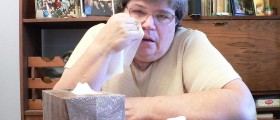
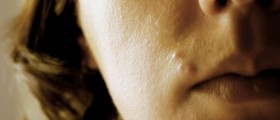

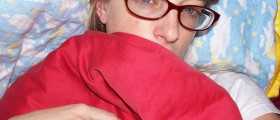
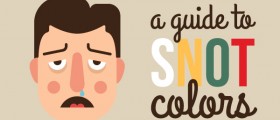


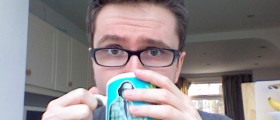





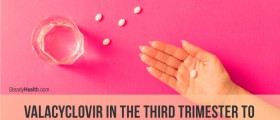
Your thoughts on this
Loading...